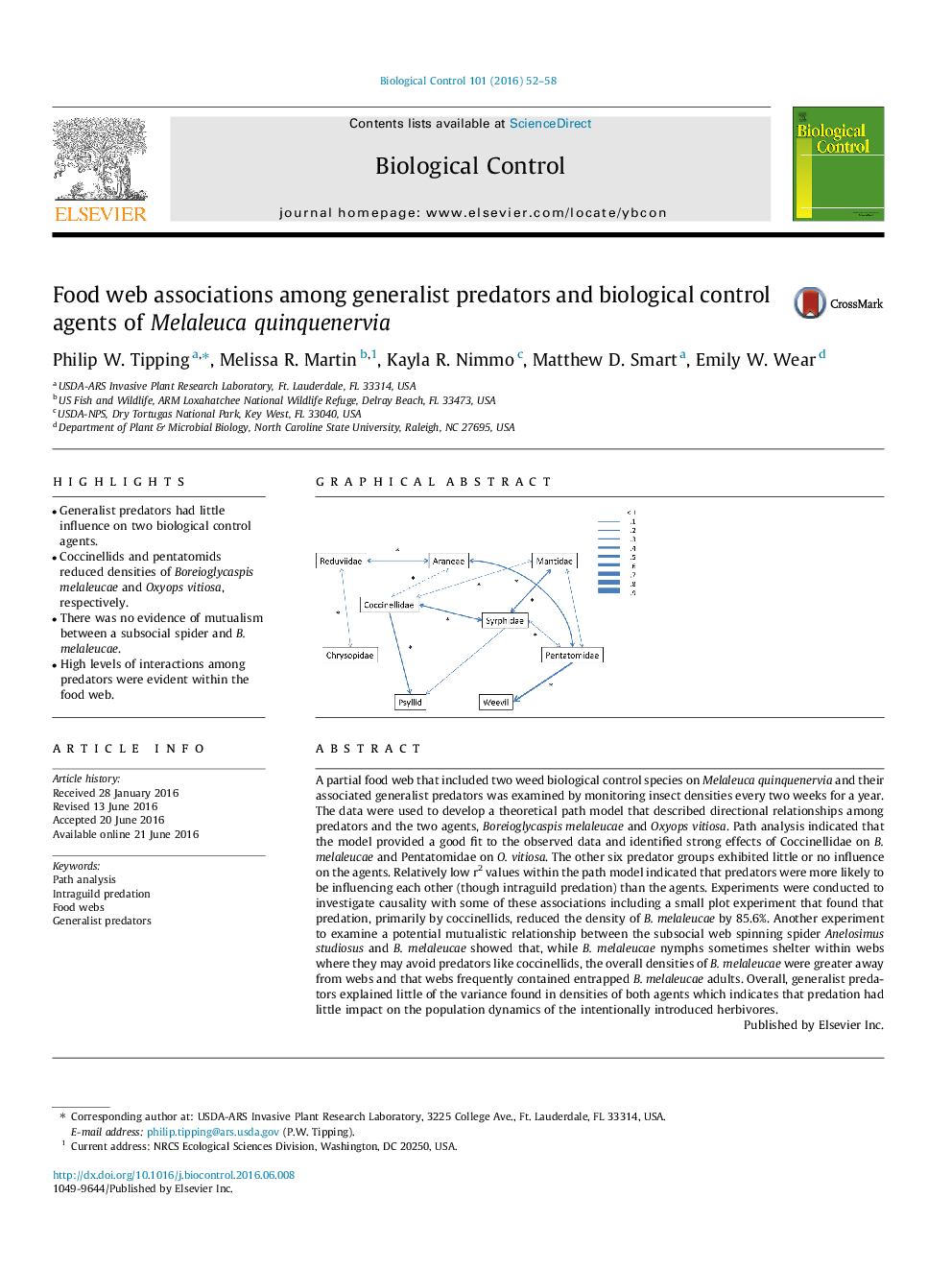| کد مقاله | کد نشریه | سال انتشار | مقاله انگلیسی | نسخه تمام متن |
|---|---|---|---|---|
| 4503604 | 1624233 | 2016 | 7 صفحه PDF | دانلود رایگان |

• Generalist predators had little influence on two biological control agents.
• Coccinellids and pentatomids reduced densities of Boreioglycaspis melaleucae and Oxyops vitiosa, respectively.
• There was no evidence of mutualism between a subsocial spider and B. melaleucae.
• High levels of interactions among predators were evident within the food web.
A partial food web that included two weed biological control species on Melaleuca quinquenervia and their associated generalist predators was examined by monitoring insect densities every two weeks for a year. The data were used to develop a theoretical path model that described directional relationships among predators and the two agents, Boreioglycaspis melaleucae and Oxyops vitiosa. Path analysis indicated that the model provided a good fit to the observed data and identified strong effects of Coccinellidae on B. melaleucae and Pentatomidae on O. vitiosa. The other six predator groups exhibited little or no influence on the agents. Relatively low r2 values within the path model indicated that predators were more likely to be influencing each other (though intraguild predation) than the agents. Experiments were conducted to investigate causality with some of these associations including a small plot experiment that found that predation, primarily by coccinellids, reduced the density of B. melaleucae by 85.6%. Another experiment to examine a potential mutualistic relationship between the subsocial web spinning spider Anelosimus studiosus and B. melaleucae showed that, while B. melaleucae nymphs sometimes shelter within webs where they may avoid predators like coccinellids, the overall densities of B. melaleucae were greater away from webs and that webs frequently contained entrapped B. melaleucae adults. Overall, generalist predators explained little of the variance found in densities of both agents which indicates that predation had little impact on the population dynamics of the intentionally introduced herbivores.
Figure optionsDownload as PowerPoint slide
Journal: Biological Control - Volume 101, October 2016, Pages 52–58